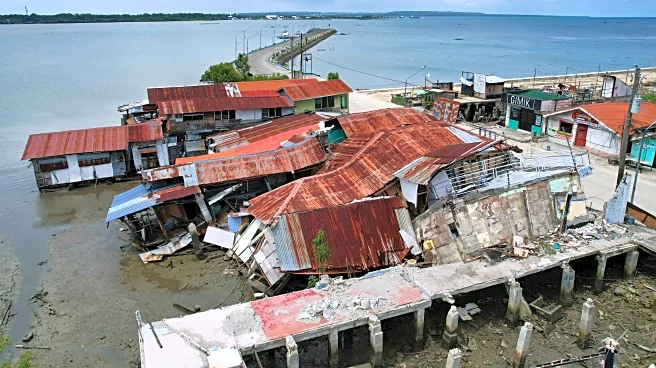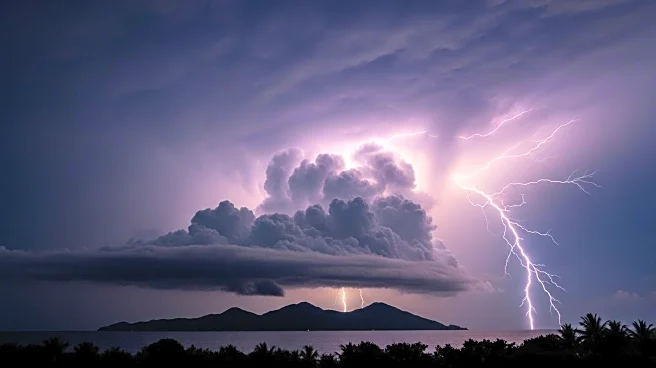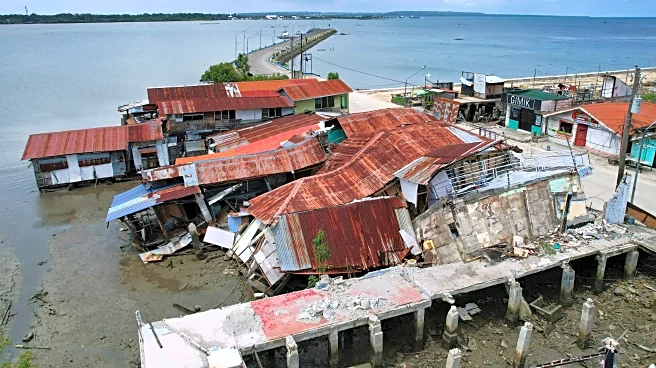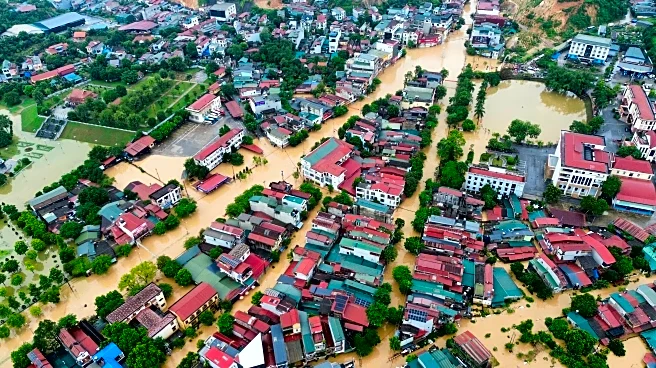What's Happening?
Typhoon Matmo has weakened into a storm after crossing the northern Philippines, causing evacuations and power outages. The storm, which initially had winds up to 110 kilometers per hour, moved into the South China Sea, affecting agricultural valleys and mountainous regions. More than 8,000 villagers were evacuated, and schools suspended classes due to the storm's impact. The Philippines, prone to natural disasters, is still recovering from a recent earthquake and previous storms. Matmo is expected to strengthen again as it heads towards southern China.
Why It's Important?
The impact of Typhoon Matmo on the Philippines underscores the country's vulnerability to natural disasters, affecting thousands of residents and disrupting daily life. The evacuations and power outages highlight the challenges faced by communities in disaster-prone areas. The storm's trajectory towards China may have further implications for regional disaster preparedness and response strategies. The frequency of such events in the Philippines raises concerns about infrastructure resilience and the need for effective emergency management systems.
What's Next?
As Matmo moves towards southern China, authorities in the region are likely to prepare for potential impacts, including evacuations and safety measures. The Philippines will continue recovery efforts from the recent earthquake and storms, focusing on rebuilding damaged infrastructure and providing aid to affected communities. The ongoing threat of natural disasters may prompt discussions on improving disaster preparedness and response strategies in the region.












